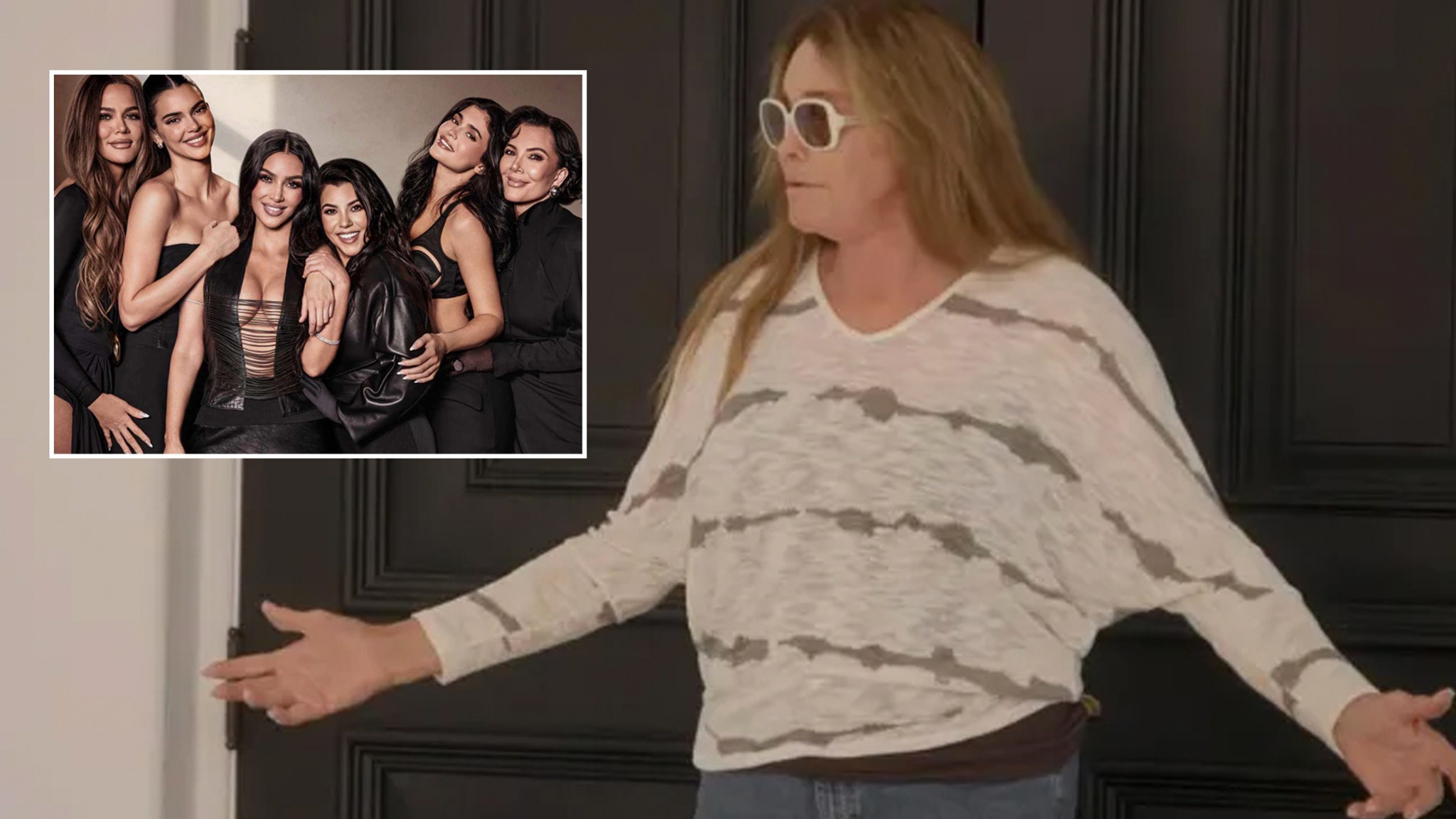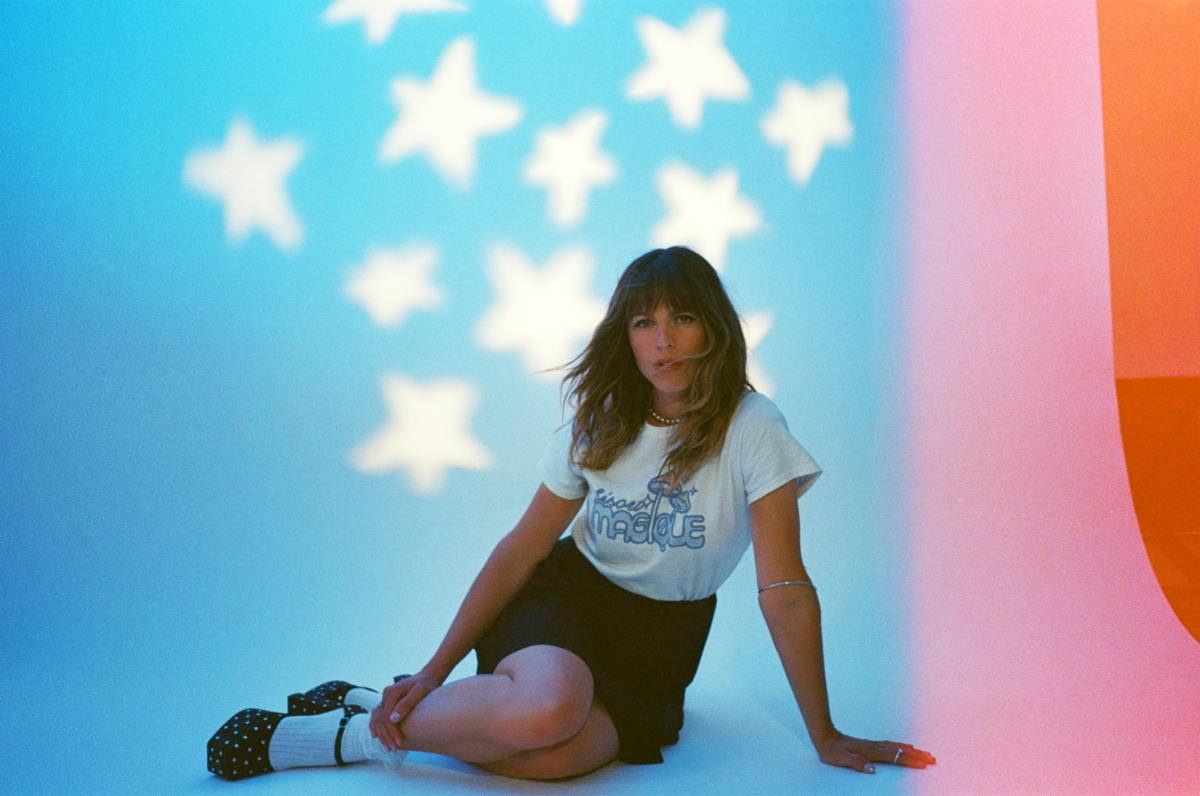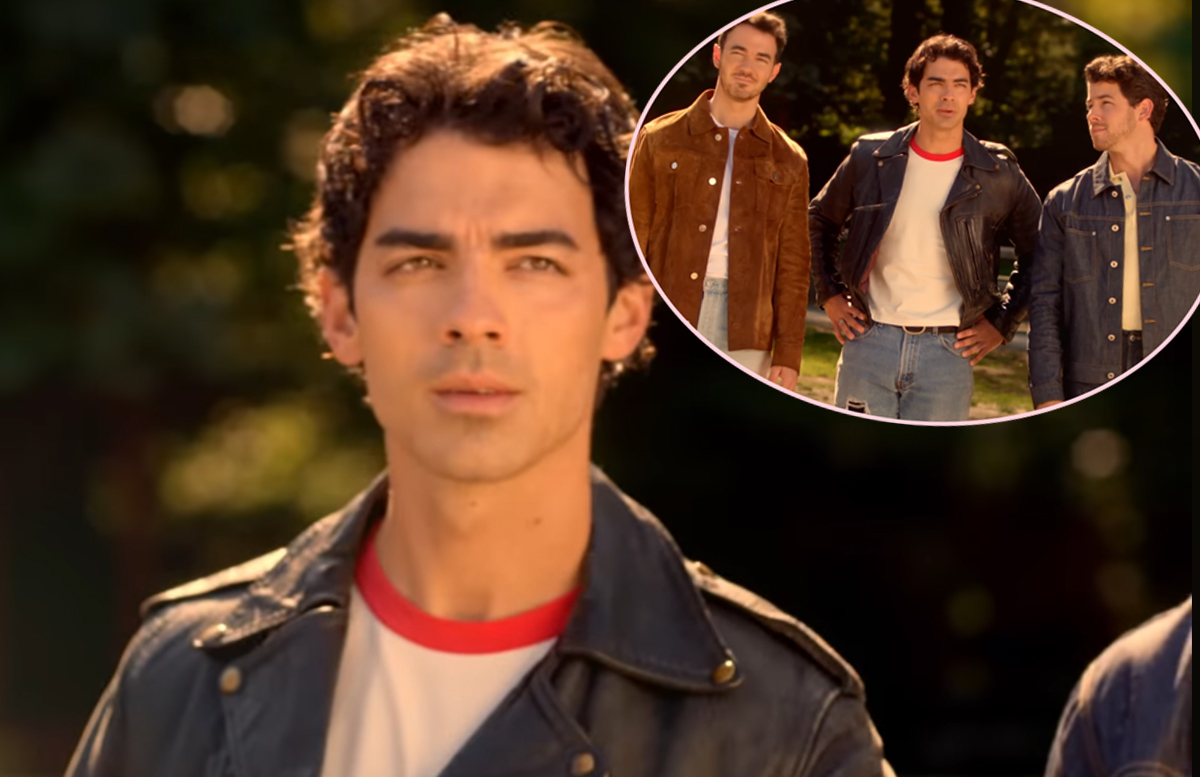LINDA MADRID: Games in this podcast range from E to M. Welcome to the official Xbox podcast, the only podcast coming to you from inside Xbox, and we’re on another field trip. We’re in San Francisco at Double Fine Productions, and I get to play an early part of Double Fine’s new game, Keeper. I’m so excited, and then later on I get to sit down with some of the devs and dive into the details of this beautiful third-person adventure, but I’m tired of talking. We’ve got to go get to playing, okay? You ready? Let’s go. [ Music ] Okay, we’re here with Lee, creative director of Keeper, Camden, the audio director, and Asif, the senior level designer. Welcome, guys. Thank you for being here.
CAMDEN STODDARD: Thanks, yeah.
LINDA MADRID: I should say thank you because, technically, I stole a room at your studios to film this, so thank you for letting me in the doors. I appreciate that. So I actually just got done playing the game, and it is — I love it. It is beautiful, and it’s also a little weird, which is something I appreciate. So the first big question, though, is what is Keeper? Because the people watching have seen some trailers, but how can you describe the game to those who haven’t played it themselves?
LEE PETTY: Well, Keeper is a third-person sort of atmospheric puzzling adventure, as we call it, and it tells the story of Twig, which is a lost seabird, and a Lighthouse who awakens after centuries of being inert. And together, the two become friends in this sort of strange world, and the Lighthouse is being almost summoned or beckoned by the Mountain Peak. And Twig is seeking refuge from The Wither, which is a sort of malicious presence throughout the island, and we follow their adventures throughout the game.
LINDA MADRID: I just have to say that just from playing, I would lay down my life for Twig, okay? I love that bird, and the inert Lighthouse, I mean, I relate, so it works. Like, I’m already in, I’m locked into this story. So we all know, you know, you’re playing a lighthouse, and I got to experience that, but what does that mean?
LEE PETTY: Yeah, it’s a game filled with exploration and puzzles, and a lot of that involves you walk around as a lighthouse. And there’s such a diversity of looks and themes throughout the game, that around every corner is something very different looking. But the primary way that you interact with the world as a lighthouse is through your light, of course. So you can aim this thing around, and it’s got this sort of default, what we call the “Unfocused Mode.” And when you aim this around, you might see little ambient things grow or react to your light, and it might give you hints that there’s some bigger interaction around the corner. And oftentimes, those bigger interactions require you to use your Focus Light, which you sort of hold down trigger, and you get a brighter beam, and you can aim it more precisely, and that can often trigger bigger interactions, and it forms the basis of our puzzles, along with Twig. So Twig is the bird companion who’s riding along on the lighthouse, and you can also use Twig in some of these interactions. And so, while the lighthouse is great at shining this light, it has no arms, only legs. We’re not doing anything too crazy.
LINDA MADRID: Yeah, of course.
LEE PETTY: Yeah, so it only has legs, but Twig, as a bird who really likes shiny objects, of course, and Twig can fly over to things and can tug on things, can wind things, can pick up things. You can even collect items from the world and hang them on the outside of the Lighthouse to use for more complex interactions. So together, those companions are not only there emotionally, but they each offer each something. Twig is a little scared of the dark. Lighthouse has its beam to keep it safe. Lighthouse can’t really emote to the creatures of the world, but Twig can as a wild bird of the island, and Twig can grab things. The Lighthouse can direct things, so you can see that this sort of forms the basis of these interactions. And, yeah, it turns out that solving these puzzles most of the time revolves around meeting new creatures. And you, you know, I think the players realize that they’re kind of helping. You could call, heal the world, restore the world, making it a better place indirectly almost by the actions of just trying to figure out what’s happening around you, and I think that’s kind of unusual for our games. You know, we talk about our puzzle structure. A lot of games would tell you, okay, here’s this problem. You walk into a gate. It’s locked. You get a cutscene. It pans over to someone, and he’s got a key, and he’s holding away from you. You’re like, how do I get the key from that guy? Our game is more integrated with the world. So you almost like stumble into the puzzles and you start to solve them before realizing what’s happening. But partway through that, hopefully, the players get an aha moment and you need that to kind of figure out how to finish the puzzle.
LINDA MADRID: Yeah.
LEE PETTY: And I think that’s the way we like to lead with the world and theme first more than a super-hard problem. Here’s a fixed set of mechanics. Go figure it out, and a lot of that plays into the sound design leading you there and the level and especially the camera kind of almost subconsciously guiding you, because most people don’t think of the camera as a verb, but it really is, and especially in this game when we’re directing it.
LINDA MADRID: Yeah, I had a big moment, the stumbling. I’m really good at stumbling. Stumbling is great. It was that section where you have to get past that giant creature with the eyes, and you had to find the orbs. I found an orb before even interacting with that creature. I didn’t know. And I was like, oh, what happens if I send Twig to this guy? And then he put the orb in. I was like, oh, that’s a puzzle, okay. And then, you can go around the world and interact with more of the creatures to find the other orbs in this, so it was really interesting.
LEE PETTY: Yeah, that’s exactly the experience people have, what’s happening? Yeah. I guess I’ll just keep doing, oh, oh, okay, yeah, yeah, and you’re sort of building your own story in your head because we’re not telling you. We have names for those characters. We have names for those exact puzzles, but we’d rather just present them to you and let you vibe with it, figure out your own way through there.
CAMDEN STODDARD: I think the design is brilliant because it does really remind me of a dream where you just kind of — it just kind of falls into it. I really love that whole feeling. It’s great. >>ASIF SIDDIKY: Yeah, anytime you can make it feel like something was happening here before I got here, that’s really — it just makes it feel so much deeper.
LEE PETTY: Yeah, it builds the world out, right, that feeling. Yeah, that’s one of my favorite things in games is just feeling like I’m in a world, regardless of the genre, what the gameplay is exactly, just feeling like you’re in a world. Like I think it’s something games do better than any other media. It’s feeling like you’re in — you’re inhabiting a space. No matter how — even the least interactive game is still so much more interactive than just about every other form of art. You know, just being able to control the way you move through a space in any way is kind of magical if the place feels like it’s there’s enough there for you to discover.
LINDA MADRID: So obviously, this is a very unique game. The Double Fine DNA is so present throughout it. Where did this inspiration come from?
LEE PETTY: Well, I think all the people on the team each bring different inspirations to the game as we’re creating it. But the origin of it for me was during the pandemic, during the lockdown times. I’ve always been a person into hiking and backpacking, but it became even more important during those times, and it was one of the few things you could do when you leave the house, right, and there weren’t that many people out there. And so, I found myself thinking a lot about what’s next for life for us, maybe, and what if we weren’t around anymore? What — would life continue to development? Would it continue to develop, and would it still be motivated by a desire to connect and communicate with each other? You know, and I remember I had seen this documentary not too many years ago about mushrooms, and I had this memory of these sort of vast underground networks of mushrooms, mycelium, connecting to each other and read about that trees also sometimes connect to other trees using these networks that the mushrooms put together. And somehow in that, the sort of themes of isolation and friendship and companionship and exploring a strange space and wondering what’s next for life and just all that kind of came together as an origin story for it.
LINDA MADRID: I love that, especially the theme about connection, because I think from what I played, you all did a really great job at pushing that connection between the Lighthouse and Twig. I really felt that bonding. Could you tell us the work that went into making sure that players really felt that connection between the two?
LEE PETTY: Well, I think Camden should talk a little bit about audio, because, you know, because we’re a wordless game, so much of it comes down to sound design as well, and yeah, I love how you came up with Twig’s —
CAMDEN STODDARD: So when Lee first was discussing this idea, one of the things that he put across to me and my team is we’re going to have to lean heavily on sound and music because we’re not going to have any dialogue or written things. There’s a lot of things that are going to have to be communicated, and it is a really emotional arc. And as I started learning more and more about the game, I was like, oh, this is going to have to be really done well. The connection that these two characters have and these two characters are so unusual, I had to really think about where that’s going to go. Finding the voice of Twig, and it’s going to sound funny, but the inspiration I had was Penn and Teller.
LEE PETTY: I didn’t even know that.
LINDA MADRID: That’s so cool.
CAMDEN STODDARD: I started watching them and how one of them is always yapping away, and the other one’s kind of miming, and I was like, there’s something really special about that because they’re so different, but still, they’re super bonded, right? So I started thinking about, well, okay, then that means that Twig is going to have to be super expressive, and I started experimenting with different animals. I started thinking about birds and how they communicate. And I was also, well, this world is not our world. It’s actually very, very different. So there’s a bunch of things that I had to go, well, okay, we’re going to have to go over into some other areas. So I found out that the best way to do Twig was to actually perform Twig because you had to be very, very emotional in a lot of areas, and it just couldn’t be, like, a straight-up bird. It had to be something else. It had to be something that was reacting not necessarily as a human, but it was a being that was emotionally locked with this other being, right? So that became a point where I’m like, okay, this is not sound design anymore. This is, like, almost a performance. It is sound design, but at the same time, there had to be a really strong connection. So I had to find out how to become a bird.
LINDA MADRID: So you performed as Twig, wow. Props to you. First of all, I felt the expressions throughout.
CAMDEN STODDARD: Yeah.
LINDA MADRID: Because it is very interesting that this game is — it tells a story, but it tells it completely without words.
CAMDEN STODDARD: Right.
LINDA MADRID: I love that, and I feel like there must have been a lot of challenges there. I know you spoke a bit about that, but how do you tell a cohesive narrative but without any kind of dialogue or traditional HUD or UI? >>ASIF SIDDIKY: Yeah, I’ll say just from a design side the biggest thing that we did in our favor when we made this decision not to have any dialogue or HUD or any of that stuff was to keep the camera on rails. So at every point in the game, the camera is hand-authored, space by space, and that way, we were always able to direct your attention towards the exact thing you’re supposed to be looking at. Or alternatively, create a camera that is a little bit more free-flowing, and those sort of indirectly tell you which areas are significant, which areas are just for, like, vibes and for exploring and appreciating and taking in the sound and visual scape. So that was a really powerful tool, and there’s a lot of stuff that is used in games already that we kind of just take for granted. And in this case, this is all we were left with, so it’s like knowing when the camera sort of focuses in on something. And when you complete a certain objective, the camera relaxes a little bit. And normally, that just happens in the background with all this other stuff, with a character talking, a big Zelda chime and all this stuff. But we just zeroed in on that, and you’ll see that throughout the game. There’s stuff that is shifting constantly depending on how you progress through the puzzles and just changing the state of the world, so I think that’s really unique. Yeah, the player psychology is always so interesting to me in game design, how game developers trick a player into feeling certain things. I love that. The very first kind of opening section, I was playing, and you’re the lighthouse and you’re kind of just stumbling about and really, I felt like I was lugging that thing through, and I felt this frustration. But then once I met Twig and we got further in, it felt like a breath of fresh air and that chill vibe that you were talking about. Yeah, I really feel that. I can wind down and play this game, but there’s the puzzle element that’s really interesting. It’s kind of dreamlike in quality, a little surreal, which of course is — surrealness is a Double Fine thing, so it works out perfectly.
LEE PETTY: You know, “weird but chill” is a term we started using around the team because the game isn’t really what we call a cozy game in a lot of ways, because cozy games tend to have a very specific sort of aesthetic and a sort of very, very mellow vibe. And our game is not mellow, right? There’s moments of beauty and tranquility, but there’s also moments of — that we’re trying to create a sense of confusion or tension in the player. But at the same time, we wanted to design an experience that there’s no way to fail. There’s no death in our game. There’s no restarting in our game, and that’s sort of a bit chill, right, because you can’t mess it up. And once you learn to trust the game a bit, I think it lets players go along for the weird ride more because they’re not having to figure out all the ruleset because they could do it wrong, and now I’m frustrated. Where do I go and what’s happening? But it takes a little while; most games don’t go there. So we have to kind of get the player into that mode, but once you’re there, we tried to also leave — I think the term “weird but chill” also comes from the fact that we try to leave what I call negative space in games, right? Which is, most games are, quite often, you’re just like a shark going through a content tube from this point to this point to this point to this point, and we wanted just to have areas that weren’t telling you where to go, what to do. You can fail, but at the same time, they’re just beautiful, sonically, visually, you know, framed well in the camera, and just a moment to breathe in the world because I think that’s what I found myself doing, too, in the pandemic. I just needed a moment to breathe. I think that lets that relationship between Twig and the Lighthouse have meaning in part, too, because they’re not always having to help each other through a puzzle or to resist some particular — they can just spend time together appreciating the world around them. And so, we have a lot of little ambient interactions that are completely optional. You know, we don’t give the player a lot of meta rewards. Why did I grow that plant? Why did I find that flower? Because it’s beautiful; because you can; because it’s interactive, and we wanted to leave space for that. And, yeah, so that’s sort of the term we came up with to encompass that way of thinking about the world.
LINDA MADRID: Yeah, “weird but chill,” I love that. I love quiet moments in video games. There were a few moments where there was a plateau that I could go and just take in the world. And that beautiful aesthetic that you capture, which you were kind of speaking about this — during the pandemic when you were out on your nature walks and everything. So is that kind of like where you pulled a lot of the aesthetic inspiration from?
CAMDEN STODDARD: It’s kind of a collision of a couple of things, you know, and I think one part of it is certainly the idea. If you look at the open landscapes and seeing the sea and lots of mountains, it certainly comes from that place. But at the same time, everything is not quite as it appears to be, and when I started imagining where could life develop, what’s the most rational way life could develop — because the game is a little bit of a fever dream. It’s not entirely rational. I wanted everything to have the sense of life to it. You know, even something like a rock. I wanted to have a sense of gesture, of form and color and beauty, even in just a rock. And that, of course, naturally led me to thinking about painting, right? Because painting is this sort of way humans process this sort of reality, and simplify it, and add gesture and emotion to it, just by the choice of color and shapes. And I’ve long been a fan of surrealism, and I think probably most people are familiar with surrealist painters like Dali. But the artist that, in particular, inspired me the most was an artist who was also part of the early Dada and Surrealist movements named Max Ernst. And specifically, he had this one technique that I really liked. It was called grattage, and what he did is he took a bunch of actual physical objects, just random-found objects, and put them under the canvas. And then he took very watery paint, it was probably oil, and kind of just scumbled through it. And it created impressions, and he let that dry and then looked at that and then made landscapes out of it. And they are these most beautiful, fantastic, weird landscapes, and just seeing those, they’re so full of life to me. Part of it was just because of the movement of the paint as it was, you know, kind of dried, and then how he transformed that into something specific. And I think that was just one of the early inspirations, we’re, like, we’ve got to have this. So it’s kind of like nature, a sense that everything could be alive, and then, yes, surrealism also has this weirdness, right? The things that are put next to each other that you don’t expect to be together, or maybe a rock looking soft instead of always looking hard. And so that’s kind of like, that sort of built the framework of our visual style from that.
LINDA MADRID: Yeah, as I was progressing through, there was this giant mountain in the distance that I felt like I was being drawn towards. Was that purposeful, intentional, yeah? >>ASIF SIDDIKY: Yeah, it was definitely intentional. I mean, I think with something like this, when you don’t have a clear story from the beginning, you at least need some kind of big thing to anchor your experience to, and the peak is that in this case. Like there are a lot of games where you’re climbing up towards the peak of something, and I think this fits right in there. But we went to great efforts to constantly show you that again and again from different perspectives. And in a way, that kind of tells the story, because there are parts where you feel like, oh, I’m getting so close to it. And all of a sudden, I’m viewing it from this totally different angle, and there’s this totally different side to the island that I hadn’t expected before. And I guess the way in which the peak is framed over the course of the game is the big beat of the story. So that when you do finally make it, I don’t think it’s a spoiler to say that eventually you will get there. That’s sort of the promise that we’re telling the players, that you’re going to get there at some point, and you’re going to discover something, and it’s going to change everything about your experience prior to that. So hopefully that’s the strong through line, and people will be interested to see how their view of it evolves over the course of the game. Yeah, the focus was definitely drawn towards the mountain. Not just visually focused, but I also, musically, it felt like just every element of the game was pushing us towards the mountain.
CAMDEN STODDARD: Yeah. I started kind of picturing the sound and music of this game almost like a quilt, and the mountain is a big thread. It’s a very big thread, so I had a lot of discussion with David Earl, our composer, about how do we feel the push musically? And so, he came up with the mountain has its own theme. It has its own musical element, and it starts weaving in and out of the music more and more often. You start sensing it. There’s something very powerful about music and what it can do with humans. We respond to it. So it’s kind of like what the mountain is doing. You are supposed to go there for a reason. It is calling to you. You are feeling drawn, and we definitely leaned into music for that.
LINDA MADRID: Yeah, so we also got a bit of B-roll from you all of a section I didn’t get to play myself, and it’s kind of like you’re in a very pinkish area. It looks so pretty, almost like cotton candy everywhere. And, obviously, we don’t want to spoil anything, but is there maybe something you could tease us with about that section?
LEE PETTY: Yeah. I think, you know, that’s interesting because another sort of theme of the game is change or, as we often say, metamorphosis and its relationship to meaning, right? And so, I think you could take that as the way we all change over time and what we take from it. Are we really the same person from month to month, minute to minute, and how does that affect who we are and where we’re going in the future? This is stuff we think about a lot in REV Force. And so, we wanted that to almost be like corporeal in the game, like a physical mechanic in the game. And so, you kind of get into this space. You’ve just been in much more interior spaces that are dark, and you emerge into this bright, open, almost acidically pink and purple landscape, you know, and it’s just too much color almost, especially in contrast to where you’ve been. And it’s beautiful and it’s airy and the sky is open, but then, that idea of metamorphosis or change is brought in there because the Lighthouse is very much an earthbound entity, right? It’s heavy. It’s got these four weird legs. It’s trying to keep its balance, and then you’re in this moment where the player is able to use this pollen, this fluff to add a lightness to the Lighthouse. And it changes the way the Lighthouse moves and navigates to the space, which opens up a whole different way of seeing the world and solving some puzzles around that.
LINDA MADRID: Oh, how exciting, okay. Can’t wait to play that. I hate change, personally, in my life, but I’m very excited for this game. I’m sure it’s going to make me feel a lot of emotions, so better not make me cry, okay? Don’t make me cry. Don’t laugh like that. [ Laughter ]
ASIF SIDDIKY: You just know it’s coming.
LINDA MADRID: Speaking of emotions, kind of capturing that music, of course, plays a huge part in it. We talked about the weird and the chill as well. So how do you kind of combine all of these elements into creating this atmosphere with the music?
CAMDEN STODDARD: Before we started getting into the actual composition and arrangement and implementation behaviors, I had a long series of conversations with our composer, David Earl. And the main thing that was striking him, that I also really loved, is right from the start in this game, there’s a huge sense of isolation, connection. There are themes that come up around safety. One of the things that happens with these two creatures is the safeness they feel, which is really, really important musically, the transformation and the journey that they go throughout. There is definitely a journey that happens, so I spent a lot of time just talking with our composer about this journey and about the feelings that are happening and about this bond and how it goes outward and inward. There’s a lot of inner reflection as well, so we kind of started with these big themes and then kind of sculpted it down as we went. We also talked about how this is such an unusual world. One of the themes, like a mantra, that the composer and I had, that we were inspired by, was if you were in Salvador Dali’s head while he was dreaming, what would it sound like? What would the music be playing? What would that be like? So that’s where we kind of held the space about it. And Dave, to his credit, I think really nailed it. He not only really got the music that provides a lot of the emotional heft in a lot of these places, but he went so far where he was like, this world is so strange, I think I have to make new instruments. So he actually invented some new instruments in order to do this, and there are sounds that happen musically which are impossible, which is really fun. As a sound designer, I just learned so much just going through this, but we had to talk about every act and every portion of this game and what that meant musically and how you set up narrative with it. It became very apparent to us that we had to very much deliver something powerful, and as much as there’s no dialogue and as much as there’s no concrete story going on, we could see what you were doing. And we could understand, okay, we have to understand this from the point of the human condition and what everybody’s been going through over a certain period of time. There’s a lot of call for something like this, right? So musically, it became this very important documentation of what these two characters were going through and what they were evolving into, and that was extraordinary. It’s one of the best things I’ve ever been involved with.
LINDA MADRID: Yeah, that’s amazing, especially creating new instruments is so interesting. I want to take lessons on whatever those instruments are. Another aspect of the game is, obviously, level design. You can tell a story throughout that, as well, so could you speak on your journey in capturing the story through that? >>ASIF SIDDIKY: Sure. Like I said earlier, this is all a fixed camera. So that really allowed us to lay this space out in exactly the way it needed to be for the camera to move through it and sort of deliver the different beats. I’m just thinking back to the way we first started out. Lee would have these incredible concepts, the whole art team. And I would sort of look at those and be like, okay, well, how do we hit this exact moment somewhere in the game? And so, I would set these cameras up, just sort of lay out the space and be like, okay, I know that at this point we’re going to try and match this piece of concept art as closely as possible. Because they’re already so rich with emotion, you can easily translate that with a little bit of cinematic language of how the camera leads into that shot and comes out of it. And we know which places make you feel — as these guys have said, which places make you feel alone; which places make you feel huge; which make you feel like you’re crowded and there are all these dangerous things around you, and it’s just you and your little buddy. All that stuff is just so heavily reliant on camera in this game. It was really fun to play around with that dynamic, and especially for puzzles, it’s really challenging because the way I kind of described it to someone I was talking to about this recently, it’s like you’re playing charades with a bunch of strangers because you’re trying to communicate what the setup for this is. You don’t have any words at your disposal, and you also don’t have the shared language like you normally would if you were playing a similar game with friends. You have to kind of make things feel universal, but it’s also not universal because this world is so strange. So how do you find something that feels understandable to a player? And then, you’re sort of building a new language with them as you’re playing the game. So in a way, that’s really cool because it actually helps you focus the range of puzzles in a nice way and the progression of introducing new ideas is really slow. So as you’re playing through the game, you feel like you’re developing a mastery of it and you’re sort of becoming familiar with the rules of this universe that have nothing to do with our own. And yeah, I just don’t know that there’s any other way you could do that. We would almost ruin the game if we started adding in words. If Twig talked to you and told you, like, oh, pull on this. It would completely derail the entire thing. So yeah, it was really cool to just lean on purely raw human-like interaction stuff. When you’re cramped in, this is kind of scary a feeling. When this is open and bright, you feel more relaxed. So you’re really just kind of playing with human emotion through lighting and space. Yeah, it was really interesting learning the rules of the world and it really promoted that exploration. Can I shine a light here? What will it do? How can I interact? What if I pull here? I really enjoyed that exploration version of the puzzles there, and I stumbled upon a few emotes. I’m a collector, so I’m very excited to continue diving into that and secret areas and stuff. >>ASIF SIDDIKY: Yeah, that’s tough, too, because secret areas with a character that is that slow-moving, you obviously don’t want to have the character go too far afield and then have to trudge back with nothing to do. So that is also something that’s not really common in many other games, right? Usually you can just, like, freely look around and run about and sprint as fast as you want, but in this game, we really had to sort of pick and choose and find little areas where you could just go off the path enough to get a, like, tiny little reward, and then come back and keep going. Yeah, I mean, it spoke to me. So we’re getting close to the end, I have to leave. I can’t stay here in this studio, which is so much fun. I just want to play here. It’s amazing, but we have a favorite question here on the podcast, and that is, what’s the thing that each of you are most excited for players to experience when they finally get to play Keeper on October 17th?
LEE PETTY: That’s a tough one. There’s so many things. I mean, I think for me, we tried to construct an experience that would be filled with the unexpected. I think I feel like so many things that I see or play out there, I know what’s going to happen after you’ve seen a few of them. And it’s not that we’re trying to, you know, constantly surprise you, but what we’re trying to do is create an experience that works on different levels so you can bring yourself to it, because that’s what I love about art, right, is that you can bring your own experiences and your own interpretations to it. And it’s like having a dialogue with the experience just in your head, right? And so, we wanted to create this experience that certainly has a story it tells. It certainly has themes that it explores. There’s levels you progress through, but we’ve tried to leave enough room so that it resonates with you afterwards, and I’m really excited to see what people — their take on it. Like, oh, this is what it means, or this is what I think happened here because there’s probably many valid interpretations, and I just really am looking forward to people bringing themselves to the experience.
CAMDEN STODDARD: For me, the thing I’m most looking forward to is what I went through, which is I really started to care about it. There’s a bunch of things that happen in this game that are just?? it just became personal to me. I think it has something that people are going to play this and they’re going to enjoy it, but I also think they’re going to identify with a few things and maybe take it in, maybe do some inner reflection. I’m looking forward to that. I hope it kind of gives people something really good to feel about, because that’s the main thing I got from this game is it’s okay. It’s okay if you don’t know exactly what’s going to happen. It’s going to be okay, and I really like that part about the game. >>ASIF SIDDIKY: Yeah, I think Lee touched on this a little bit already, just about the many ways you can interpret the game. But I think for me, the thing I’m most looking forward to is just the surprising way in which the game introduces new senses of scale as the game progresses. If you thought you were big as just the Lighthouse, there are worlds you will enter that just completely make you feel like a tiny little ant, and I think that’s going to be a really nice surprise for people. And there’s other surprises in between that I won’t get into. But yeah, I think just that feeling of this world is so much bigger than you realize, and you’re going to really dig into that as you progress through the game.
LINDA MADRID: Love that. Yeah, well, thank you three so much for joining me at your studio here, Really appreciate it. I’m excited. Only one month away, that’s exciting. How do you guys feel?
LEE PETTY: Usually, when you ask developers, “Your game’s coming out in a month; how do you feel?” We’re like — we’re excited and exhausted.
CAMDEN STODDARD: Cold sweat.
LINDA MADRID: Yeah, it’s a loaded question.
CAMDEN STODDARD: Not stressed at all.
LINDA MADRID: No.
LEE PETTY: I mean, it’s that weird thing. You make something; you spend years working with talented folks across all sorts of disciplines, collaboratively making this weird, new thing together and you’re so entrenched in it, and it feels personal to put it out in the world, and you’re vulnerable when that happens. You’re excited, but you’re also kind of scared, even though you think you made something really good.
LINDA MADRID: Yeah. It’s your baby that you’re now kind of handing over to the world, so it’s exciting, so congratulations on that.
LEE PETTY: Thank you.
LINDA MADRID: And that’s it for this episode of the official Xbox podcast. Don’t forget you can check out Keeper October 17th, coming to Xbox Series X and S and PC, and also Game Pass Day One. So make sure to check it out, because it’s one you definitely don’t want to miss, but that’s it from kind of sunny San Francisco and Double Fine Productions. All right. That’s it for now, bye. [ Music ]




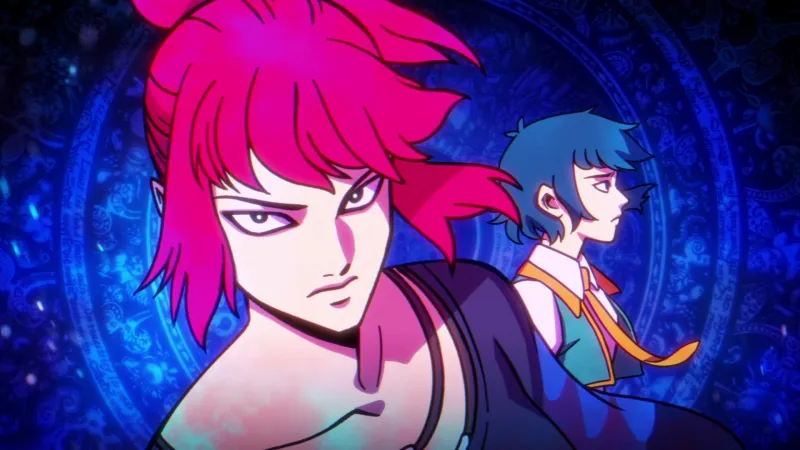

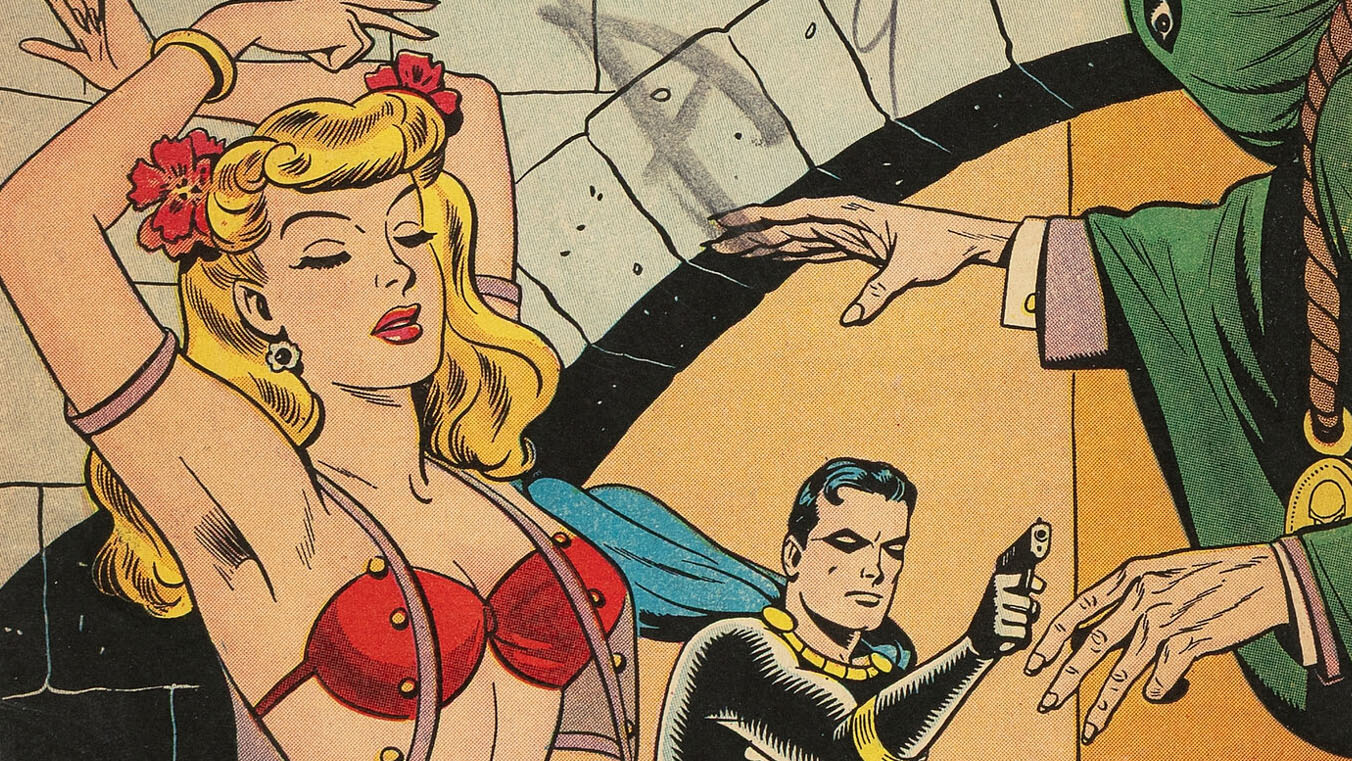




![‘Our Hero, Balthazar’ Thwarts a Would-Be School Shooter in First Images For Wild Satire Starring Noah Centineo and Asa Butterfield [Exclusive] ‘Our Hero, Balthazar’ Thwarts a Would-Be School Shooter in First Images For Wild Satire Starring Noah Centineo and Asa Butterfield [Exclusive]](https://static1.colliderimages.com/wordpress/wp-content/uploads/2025/06/untitled-design-70.jpg)
